winston churchill
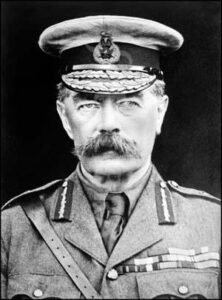
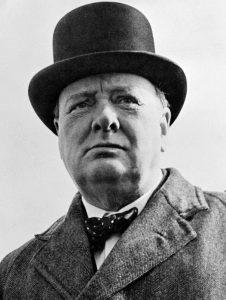 The initiative to send a relief army to support Antwerp did not begin with Winston Churchill, but with Lord Kitchener and the French Government. Churchill was not involved or consulted about the plans until they were well underway, with significant troop movements already in progress or planned. Deciding that he should be brought into the loop, Churchill was summoned to a midnight meeting at Lord Kitchener’s residence on October 2, 1914. It was during this meeting that he fully grasped the progress of the plans to send a relief army to Antwerp, a coordination between Lord Kitchener and the French Government. He learned as well that no definitive commitments had been made to the Belgian Government. On that same afternoon, the Belgian Government had resolved to evacuate Antwerp, pull back the field army from the fort, and effectively abandon the city’s defense.
The initiative to send a relief army to support Antwerp did not begin with Winston Churchill, but with Lord Kitchener and the French Government. Churchill was not involved or consulted about the plans until they were well underway, with significant troop movements already in progress or planned. Deciding that he should be brought into the loop, Churchill was summoned to a midnight meeting at Lord Kitchener’s residence on October 2, 1914. It was during this meeting that he fully grasped the progress of the plans to send a relief army to Antwerp, a coordination between Lord Kitchener and the French Government. He learned as well that no definitive commitments had been made to the Belgian Government. On that same afternoon, the Belgian Government had resolved to evacuate Antwerp, pull back the field army from the fort, and effectively abandon the city’s defense.
The men were deeply troubled by the Belgian Government’s plan. It appeared that just as help was within reach, everything might be sacrificed for a mere three or four days of further resistance. Under these conditions, Churchill proposed to immediately travel to Antwerp to inform the Belgian Government of the ongoing efforts, assess the situation firsthand, and explore how the defense could be extended until a relief force was ready. The others agreed to Churchill’s proposal, and he promptly made his way across the Channel.
The next day, after discussions with the Belgian Government and British Staff officers in Antwerp overseeing the operations, Churchill presented a cautious telegraphic proposal. He avoided any declarations on behalf of the British Government that might encourage the Belgians to hold out for support he couldn’t guaranteed.
Churchill’s proposal was concise and transmitted via telegram. It stated: “The Belgians were to continue the resistance to the utmost limit of their power. The British and French Governments were to say within three days definitely whether they could send a relieving force or not, and what the dimensions of that force would be.
In the event of their not being able to send a relieving force the British Government were to send in any case to Ghent and other points on the line of retreat British troops sufficient to insure the safe retirement of the Belgian field army, so that the Belgian  field army would not be compromised through continuing the resistance on the Antwerp fortress line.
field army would not be compromised through continuing the resistance on the Antwerp fortress line.
Incidentally, we were to aid and encourage the defense of Antwerp by the sending of naval guns, naval brigades, and any other minor measures likely to enable the defenders to hold out the necessary number of days.”
The proposal was contingent upon approval from both parties. It remained unsettled until it received the acceptance of both governments. Upon agreement, Churchill received a telegraph announcing the dispatch of a relief army, including its size and structure, which I was to communicate to the Belgians. Churchill was instructed to do all in his power to sustain the defense in the interim, which he did, disregarding any potential repercussions.
Churchill chose not to recount the well-known military events, but he believed it would be erroneous to view Lord Kitchener’s attempts to relieve Antwerp, in which Churchill had a significant but secondary role, as a venture that resulted solely in adversity.
Churchill believed that military history would deem the outcomes highly favorable to the Western Allies. The significant battle that began on the Aisne was extending daily towards the sea. Sir John French’s forces were assembling and commencing the Battle of Armentières, which led to the pivotal Battle of Ypres, amid an ever-changing situation.
The prolonged defense of Antwerp, even by just a few days, detained substantial German forces near the fortress. The sudden and audacious deployment of a new British division and a British cavalry division at Ghent, among other places, perplexed the cautious German command, causing them to anticipate the arrival of a large force from the sea.
Regardless, their advance was tentative, faced with only weak opposition, and Churchill was convinced that history would confirm, certainly in his view and that of many esteemed military officers of the time, that the 
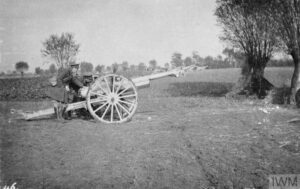 entirety of this operation…the movement of the British and associated French troops…though it failed to save Antwerp, resulted in the great battle being fought along the Yser, rather than twenty or thirty miles to the south, and if that was the case, then the losses sustained by the naval division, fortunately not severe in terms of lives, will undoubtedly have been justified for the greater good.
entirety of this operation…the movement of the British and associated French troops…though it failed to save Antwerp, resulted in the great battle being fought along the Yser, rather than twenty or thirty miles to the south, and if that was the case, then the losses sustained by the naval division, fortunately not severe in terms of lives, will undoubtedly have been justified for the greater good.

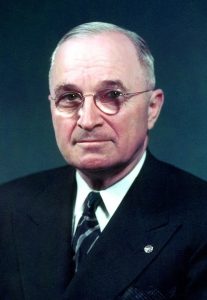 “Who was Winston Churchill?” It’s not a question you often hear, because Winston Churchill had a presence. His features were distinct, but he was not a big man. Churchill stood 5’6½” tall and weighed 187 pounds. He was maybe 35 pounds overweight, but not in bad health, especially considering he smoked as many as ten cigars a day, and when you consider that he lived to be 90 years old, it would seem that none of the normal “risk factors” applied to Winston Churchill. He dealt with daily stress, poor eating habits, excess weight, and smoking, but outlived many people in this era or that. How people felt about Winston Churchill, depended on which side of the subject in question they were on. When he made up his mind on a matter, he rarely changed his mind, and he didn’t back down.
“Who was Winston Churchill?” It’s not a question you often hear, because Winston Churchill had a presence. His features were distinct, but he was not a big man. Churchill stood 5’6½” tall and weighed 187 pounds. He was maybe 35 pounds overweight, but not in bad health, especially considering he smoked as many as ten cigars a day, and when you consider that he lived to be 90 years old, it would seem that none of the normal “risk factors” applied to Winston Churchill. He dealt with daily stress, poor eating habits, excess weight, and smoking, but outlived many people in this era or that. How people felt about Winston Churchill, depended on which side of the subject in question they were on. When he made up his mind on a matter, he rarely changed his mind, and he didn’t back down.
He was responsible for one of the most famous speeches of the Cold War period. It was a speech in which former British Prime Minister Winston Churchill condemned the Soviet Union’s policies in Europe and declared, “From Stettin in the Baltic to Trieste in the Adriatic, an iron curtain has descended across the continent.” Churchill’s Cold War speech is one of the “opening volleys” announcing the beginning of the Cold War. When he was defeated for re-election as prime minister in 1945, he was invited to Westminster College in Fulton, Missouri, which is where he gave this speech. President Harry S Truman joined Churchill on the platform and listened intently to his speech. Expressing praise for the United States, Churchill declared that the United States stood “at the pinnacle of world power.” England and the United States have long had a “friendly, but competitive relationship,” and it would soon become quite clear that a primary purpose of his talk was to argue for an even closer “special relationship” between the United States and Great Britain…the two great powers of the “English-speaking world.” But, would it be in the best interest of the United States to agree?
World War II had ended, and as in any post war situation, things were still pretty chaotic. Nevertheless, it was necessary to set policies, and to organize the losing countries so that things didn’t escalate out of control 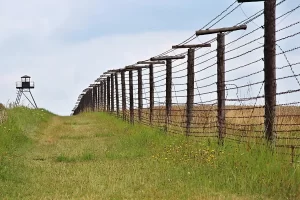
 again…not an easy task. The Soviet Union was well known for its expansionistic policies and was unlikely to stop trying to take over its neighbors without some kind of intervention. In addition to the “iron curtain” that had descended across Eastern Europe, Churchill spoke of “communist fifth columns” that were operating throughout western and southern Europe. Churchill compared the Soviet Union to disastrous consequences of the appeasement of Hitler prior to World War II, saying that in dealing with the Soviets there was “nothing which they admire so much as strength, and there is nothing for which they have less respect than for military weakness.” Therefore, without intervention, they would quickly get back to the same disastrous practices they used before, and the war would have to fought all over again.
again…not an easy task. The Soviet Union was well known for its expansionistic policies and was unlikely to stop trying to take over its neighbors without some kind of intervention. In addition to the “iron curtain” that had descended across Eastern Europe, Churchill spoke of “communist fifth columns” that were operating throughout western and southern Europe. Churchill compared the Soviet Union to disastrous consequences of the appeasement of Hitler prior to World War II, saying that in dealing with the Soviets there was “nothing which they admire so much as strength, and there is nothing for which they have less respect than for military weakness.” Therefore, without intervention, they would quickly get back to the same disastrous practices they used before, and the war would have to fought all over again.
The speech was well received by Truman and many other US officials. Everyone knew the truth, and somebody simply had to come right out and say it. They had decided that because the Soviet Union was determined to expand, only a tough stance on a united front would deter the Russians. Churchill’s “iron curtain” phrase immediately entered the official vocabulary of the Cold War. It was a term everyone knew, and it perfectly described the problem. Of course, agreeing with Churchill, didn’t necessarily mean that the US officials enthusiastic about Churchill’s call for a “special relationship” between the United States and Great Britain. They weren’t concerned that Great Britain would again try to have some influence over the United States, but rather they were well aware that Britain’s power was weakening, and the US had no intention of being used as pawns to help support the crumbling British empire.
Of course, the Russian leader Joseph Stalin had a very different view of the speech, saying that it was “war 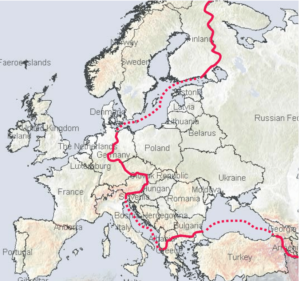
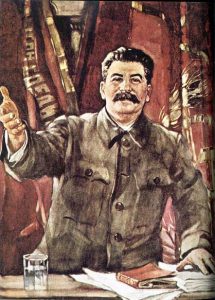 mongering” and referred to Churchill’s comments about the “English-speaking world” as imperialist “racism.” The British, Americans, and Russians, all of whom were allies against Hitler less than a year before the speech, were now drawing the battle lines of the Cold War. It didn’t take long for the similarities between Hitler and the Soviet Union to become glaringly clear, and they had to be stopped. I don’t know why dictators feel the need to enslave other people. The “Iron Curtain” would “come down” like all other forms of tyranny must eventually do, but unfortunately, a lot of lives are lost before victory is achieved.
mongering” and referred to Churchill’s comments about the “English-speaking world” as imperialist “racism.” The British, Americans, and Russians, all of whom were allies against Hitler less than a year before the speech, were now drawing the battle lines of the Cold War. It didn’t take long for the similarities between Hitler and the Soviet Union to become glaringly clear, and they had to be stopped. I don’t know why dictators feel the need to enslave other people. The “Iron Curtain” would “come down” like all other forms of tyranny must eventually do, but unfortunately, a lot of lives are lost before victory is achieved.
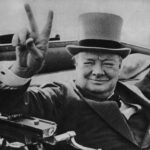 Many people today think of the “V” sign as meaning Peace, but in reality, the “V” sign used today was actually hijacked. The original “V” sign meant Victory, and it was originally presented as such by Winston Spencer-Churchill at a time when Britain is at one of its lowest points in World War II. Churchill is well known as one of the greatest motivators and speech makers of his time. On July 19, 1941, he launched the “V for Victory” campaign across Europe by telling those in Europe under Nazi control to use the letter “V” (for Victory) at every chance they got in speaking and writing. Churchill urged them to write a capital letter “V” to signify “V” for Victory. This was designed to let the Germans know they still had spirit and believed they would overcome Nazi Rule. The morale of the people was so important and this low point in history. When people give up hope, wars are lost…even before the battles are lost.
Many people today think of the “V” sign as meaning Peace, but in reality, the “V” sign used today was actually hijacked. The original “V” sign meant Victory, and it was originally presented as such by Winston Spencer-Churchill at a time when Britain is at one of its lowest points in World War II. Churchill is well known as one of the greatest motivators and speech makers of his time. On July 19, 1941, he launched the “V for Victory” campaign across Europe by telling those in Europe under Nazi control to use the letter “V” (for Victory) at every chance they got in speaking and writing. Churchill urged them to write a capital letter “V” to signify “V” for Victory. This was designed to let the Germans know they still had spirit and believed they would overcome Nazi Rule. The morale of the people was so important and this low point in history. When people give up hope, wars are lost…even before the battles are lost.
In this campaign, Churchill first gave a speech over the radio to tell the people of his plan. Immediately following his speech, the letter “V” began to appear everywhere. It was painted on walls, tapped out in Morse code on shop counters with knuckles or beer glasses or pencil stubs. It quickly became a rallying call across Europe that there was still hope. Many people weren’t aware, but this is also why Churchill’s most famous pictures from World War II always featured him giving the “V” for Victory Sign. He was continuously telling the people not to give up. That all was not lost, and Victory would still be theirs. We all know the “V” sign. Of course, it was made using the index and middle fingers, raised and parted to make a “V” shape while the other fingers are clenched.
These days, it can mean a number of things, and not all are good. When it is displayed with the palm inward 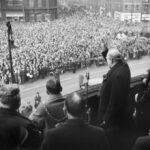 toward the signer, it can be an offensive gesture in some Commonwealth nations (similar to showing the middle finger). That usage dates back to at least 1900. When it is given with the palm outward, it is to be read as a victory sign (“V for Victory”). This usage was first introduced in January 1941 as part of a campaign by the Allies of World War II and made more widely known by Churchill the following July. As most of us know, during the Vietnam War, in the 1960s, the “V sign” with palm outward was widely adopted by the counterculture as a symbol of peace. These days, that is the most commonly used meaning and is commonly called the “peace sign.” Of course, most of us also know that it is used for fun in photographs, especially in East Asia and the United States, where the gesture is also associated with cuteness…the “rabbit ears.” That one is one I have never really figured out. Not what it is, but why people think it’s so funny. Oh well…to each his own.
toward the signer, it can be an offensive gesture in some Commonwealth nations (similar to showing the middle finger). That usage dates back to at least 1900. When it is given with the palm outward, it is to be read as a victory sign (“V for Victory”). This usage was first introduced in January 1941 as part of a campaign by the Allies of World War II and made more widely known by Churchill the following July. As most of us know, during the Vietnam War, in the 1960s, the “V sign” with palm outward was widely adopted by the counterculture as a symbol of peace. These days, that is the most commonly used meaning and is commonly called the “peace sign.” Of course, most of us also know that it is used for fun in photographs, especially in East Asia and the United States, where the gesture is also associated with cuteness…the “rabbit ears.” That one is one I have never really figured out. Not what it is, but why people think it’s so funny. Oh well…to each his own.
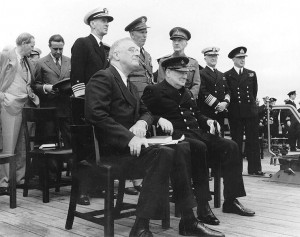
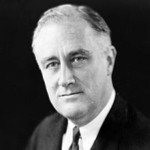
 In a military operation, especially as part of a war, absolute secrecy is vital. Those involved with the planning have to know that they can trust everyone who is around them. One of the most important operations of World War II was the D-Day attack…Operation Overlord. Success was vital, and failure was simply not an option, no matter how many men were lost. The attack on Pearl Harbor had finally drawn the United States into World War II, and now we were in it to win it.
In a military operation, especially as part of a war, absolute secrecy is vital. Those involved with the planning have to know that they can trust everyone who is around them. One of the most important operations of World War II was the D-Day attack…Operation Overlord. Success was vital, and failure was simply not an option, no matter how many men were lost. The attack on Pearl Harbor had finally drawn the United States into World War II, and now we were in it to win it.
The success of any mission is found in the planning, so in August 1943, Franklin D Roosevelt and Winston Churchill met in Quebec for the first of two meetings code-named “Quadrant.” Technically, the meeting was the first of two “Quebec Conferences.” The meetings couldn’t even officially talk about the name of the actual operation, “Operation Overlord, which was later known as D-Day to the world. The Americans and the Brits had differences of opinion as to just how the operation was to be handled, but in order to make this operation work, they would have to be in complete agreement, and the mission would have to be kept completely covert!! No one could know the details.
Everyone, from the top men down to the paper supplier was screened to make sure of their loyalties. No stone was left unturned. If any information was leaked, thousands of men could die, and the fate of the world could have been severely compromised. Nevertheless, something was “missed” somehow. A young Canadian named Émile Couture was in charge of stationery supplies that fateful day, and in reality, he had no intention of being a traitor or playing any other nefarious part in the leak of information into the operation. Nevertheless, he managed to walk out of those meetings with the tactical plans for the invasions. It wasn’t even accidental…exactly.
Roosevelt and Churchill were excellent strategists, and their very detailed plans were perfectly laid out. The operation was going to be an amazing success. Now, all they had to do was to keep everything secret until the actual day, as yet unnamed, of the operation. The plans included detailed listings of Allied military assets to be used in the landings…the number of planes, combat cars, ships, and ground soldiers. They only had to keep it very quiet, because the leak of this information could have turned the tide of the war in favor of the Axis powers, and had that happened, our world would be vastly different even from the strange world we are experiencing today. Sergeant Major Émile Couture had been tasked with cleaning up after the meetings and instructed to make sure nothing was left behind.
Couture was doing his job in a meticulous fashion, but while cleaning an office on the third floor of the hotel, he discovered a leather portfolio that was inscribed “Churchill-Roosevelt, Quebec Conference, 1943. Maybe he thought it was just an empty portfolio, and so thought he could actually have an amazing souvenir of such a monumental meeting. Just think of the stories he could tell his children and grandchildren about the time he got to help out with such an important meeting between two of the most important men if his time. History doesn’t really tell us what he was thinking, but he decided to keep the portfolio as a souvenir without realizing what was actually in the portfolio. 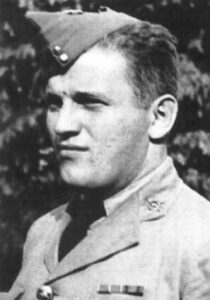 Couture walked out of the Château Frontenac without anyone being any the wiser and drove to the cottage where he was living with his cousins in Lac-Beauport just a few miles outside of Quebec City. Then he took time to examine his “treasure” only to find that he could actually be tried for treason. Couture was more than frightened. He was terrified, and he hid the files under his mattress overnight.
Couture walked out of the Château Frontenac without anyone being any the wiser and drove to the cottage where he was living with his cousins in Lac-Beauport just a few miles outside of Quebec City. Then he took time to examine his “treasure” only to find that he could actually be tried for treason. Couture was more than frightened. He was terrified, and he hid the files under his mattress overnight.
In the morning, knowing that he would have to face the music, he took the portfolio and its files to his superior, Brigadier Edmond Blais. Blais told Couture to go home and wait. He would be dealt with in the morning. Couture could have been put in prison for the remainder of the war in order to make certain that he did not leak the information he had seen. He was, after all, a low-ranking soldier, and shouldn’t have access to such top-secret information. Instead, he was sent home after being questioned by Scotland Yard and the FBI.
Whether Couture was terrified to say anything, or just an honorable soldier, he never leaked the information he had seen. Blais must have liked Couture, because he sent a letter on August 28, 1943, in which he recommended the Sergeant Major Émile Couture be awarded “the greatest accomplishment that can be given an NCO (non-commissioned officer).
On June 6, 1944, the Allies staged the largest amphibious military landing in history. Always remembered as D-Day, Operation Overlord saw 150,000 troops hit the beaches of Normandy, push back the German army and set the course for the eventual victory of the Allied forces. The secret of D-Day was kept, and the operation went off without a hitch.
Couture was rewarded for his discretion during a ceremony in September 1944, when he was commended for his actions by being granted a British Empire Medal. During the ceremony, there was no mention of what Couture had actually done to merit the award other than “services rendered.” I wonder if anyone thought that odd. Nevertheless, they really couldn’t tell, because it would have been embarrassing to the military for the public to see how easily someone walked out of the hotel with top secret documents.
Couture’s daughter, Anne Couture, insists that her father never told anyone. But someone did leak the story, and Couture became the center of the media’s attention. He gave several interviews over time, but he never told anyone whose office he had been cleaning when he found the documents or who he thought might have left them there. Though, Anne admits, he may have told her mother. If he did, Georgette Larochelle isn’t telling anyone, and in an effort to clear the record concerning her husband’s involvement in the whole incident. She has turned over all the memorabilia and documentation the family has kept over the years. It has all been donated to the Royal Museum and has been displayed in an exhibit since the 75th anniversary of the 2nd 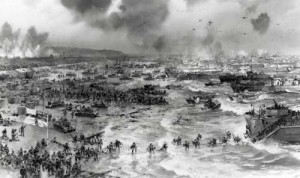
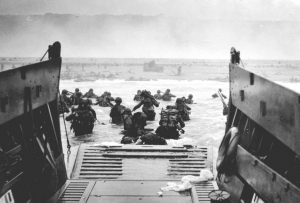 Quebec Conference.
Quebec Conference.
According to the museum’s director and curator, the documents are “convincing and some of the artifacts are considered invaluable” to the museum. He called the personal items which were specially made for the conference, “a great witness of this event of national significance.”
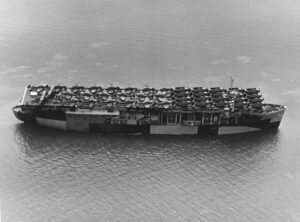 When I think of bravery, the “Woolworth Carriers” come to mind as one group of many. In the second half of World War II, the so dubbed “Woolworth Carriers” were escort carriers that were clumsy, slow, and without armor, and yet, they lead the way in dangerous waters for the American and British navies. The ships were versatile, unsung workhorses, and the men who served on them were heroes in every way. There is no way these men could have thought that they were ever safe from attack…they were a virtual target, and they knew it.
When I think of bravery, the “Woolworth Carriers” come to mind as one group of many. In the second half of World War II, the so dubbed “Woolworth Carriers” were escort carriers that were clumsy, slow, and without armor, and yet, they lead the way in dangerous waters for the American and British navies. The ships were versatile, unsung workhorses, and the men who served on them were heroes in every way. There is no way these men could have thought that they were ever safe from attack…they were a virtual target, and they knew it.
The so-called “Woolworth Carriers” shepherded convoys, hunted submarines, supported amphibious landings, and ferried men and planes in the Atlantic, the Mediterranean, the Pacific, and the Arctic at a time when U-Boats were seemingly everywhere. Although mocked as the “Woolworth Carriers,” and also called by other more “unprintable names,” the “combustible, vulnerable, and expendable” ships performed a gallant and vital role in the Allied crusade against fascist tyranny. And they did it very much unprotected.
The concept of these “Jeep” flattops and ocean-going “Model Ts” dated back to the mid-1930s. The boats were called by many names, most of them intended to be almost insulting. They were a part of a time when America, Great Britain, and Japan were investigating the possibility of converting merchant ships into small aircraft carriers. I suppose it could have been almost an innovation that had simply not seen its time yet. The idea for these ships was first initiated during World War I. As early as 1935, the United States Navy’s Bureau of Construction and Repair studied the possibility of converting 10 passenger liners for military use, and they drew up plans for taking “quick action” in the event that a war emergency created the need for such vessels. Of course, the planes of World War I were much smaller, so that part of the idea now made no sense. By 1935, the Navy was already building a powerful fleet of big flattops ships to accommodate the larger planes, so the proposals for auxiliary carriers were soon put aside. Navy Secretary Frank Knox told the United States Maritime Commission in late 1940, “The characteristics of aircraft have changed, placing more exacting demands upon the carrier. These demands are such that a converted merchant vessel can no longer make as satisfactory an aircraft carrier as was the case when the plans for those vessels were being drawn.” British Prime Minister Winston Churchill saw the auxiliary flattops’ potential for quickly replenishing the Royal Navy’s crippling combat carrier force losses, although I don’t know how these small ships could help anything. President Franklin D Roosevelt also liked the concept, thanks to the influence of shipbuilder Henry J Kaiser. Shipyards owned by Kaiser were ready to gear up for wartime production.
FDR proposed the experimental acquisition and conversion of a merchant ship of 6,000 – 8,000 tons displacement, to Admiral Harold R. “Betty” Stark, chief of naval operations. The plans called for the “carrier” to be fitted with a flight deck and equipped with about 10 helicopters or 10 planes with low landing speed. Stark and his aides went to work through January 1941 on Roosevelt’s proposal, one requirement of which was that the merchantman selected for conversion should have a sister ship that could be similarly converted for use by the British, who had been at war for a year and a half. On January 7, the Maritime Commission advised the Navy Department that the two C-3 diesel-powered cargo ships Mormacmail and Mormacland. Both ships were 492 feet long and 9,000 tons, and would be made available for conversion to carriers. The conversion project was estimated to take 18 months, but FDR imposed a deadline of three months instead. Stark actually finished a little under the three month deadline.
Acquired for conversion on March 6, Mormacmail’s was recommissioned on June 2, as USS Long Island (CVE-1). Long Island was not used in combat, but did ferried aircraft to Pearl Harbor shortly after the Battle of Midway and carried 19 Grumman F-4F Wildcat fighters and a dozen Douglas Dauntless SBD dive-bombers to Espiritu Santo for use on Guadalcanal in late August 1942. The Navy used her to train carrier pilots and ferry troops for the rest of the war. The converted Mormacland was turned over to the Royal Navy as HMS Archer on November 17, 1941. It was the first of 39 American-built escort carriers provided under the Lend-Lease program, and it did serve in the Battle of the Atlantic.
Four more merchant hulls were rebuilt into escort carriers for the British, and made ready for service in the spring and summer of 1942. They were Avenger, Biter, Dasher, and Charger. The United States Navy rescinded the Lend-Lease transfer order for the Charger, which was commissioned on March 3, 1942, as its second escort carrier. Ironically, the first Allied escort carrier to see combat was of enemy origin. The 5,527-ton, 15-knot German merchant ship Hannover was captured in the West Indies in March 1940 by a British light cruiser and a 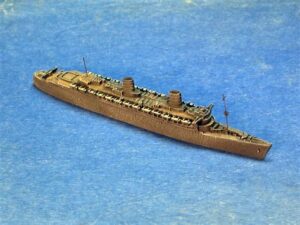 Canadian destroyer. The ship was recommissioned in June 1941 and renamed HMS Audacity in July,. The ship had its superstructure removed and replaced with a stem-to-stern, 475-foot flight deck.
Canadian destroyer. The ship was recommissioned in June 1941 and renamed HMS Audacity in July,. The ship had its superstructure removed and replaced with a stem-to-stern, 475-foot flight deck.
Once in service, Audacity and its half-dozen Wildcat fighters (called Martlets in the Royal Navy) proved to be so effective at protecting Mediterranean convoys that Nazi U-boat chief Admiral Karl Dönitz felt compelled to pay rueful tribute to the “continuous air umbrella” the ship maintained. Shortly after ferrying survivors of the sunken fleet carrier HMS Ark Royal, Audacity was torpedoed by a U-boat on the night of December 19. The skipper, Commander D W McKendrick, and 75 officers and men died.
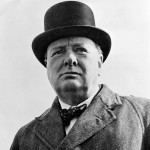 As a young battalion commander, Winston Churchill had a lot to learn about the facts of war. He was destined for greatness, and if he was to realize his destiny, he would have to learn many things. On January 17, 1916, he was battalion commander on the Western Front, when he attended a lecture on the Battle of Loos given by his friend, Colonel Tom Holland, in the Belgian town of Hazebrouck. It would be one of the first lessons, but the resulting knowledge might not be what we all would think. It was not about strategy or brave heroics, but rather of hopelessness.
As a young battalion commander, Winston Churchill had a lot to learn about the facts of war. He was destined for greatness, and if he was to realize his destiny, he would have to learn many things. On January 17, 1916, he was battalion commander on the Western Front, when he attended a lecture on the Battle of Loos given by his friend, Colonel Tom Holland, in the Belgian town of Hazebrouck. It would be one of the first lessons, but the resulting knowledge might not be what we all would think. It was not about strategy or brave heroics, but rather of hopelessness.
The Battle of Loos, which took place in September 1915, resulted in devastating casualties for the Allies and was taken by the British as a sign of the need to change their conduct of the war. In one major consequence, Sir John French was replaced by Sir Douglas Haig as British commander in the wake of that battle. “Tom spoke very well,” Churchill wrote to his wife, Clementine, “but his tale was one of hopeless failure, of sublime heroism utterly wasted and of splendid Scottish soldiers shorn away in vain with never the ghost of a chance of success. Afterwards they asked me what was the lesson of the lecture. I restrained an impulse to reply ‘Don’t do it again.’ But they will–I have no doubt.” What Churchill took away from the lecture was that in war, there is no winner…not really. There are losses on both sides, sometimes almost equal in number, so that the victory goes to the one who holds out the longest. Defeat comes in surrender.
Churchill had been demoted from First Lord of the Admiralty after the British plan to attempt a naval capture of the Turkish-controlled Dardanelle Straits met with resounding failure in mid-to-late 1915. Reduced to a minor ministerial position, Churchill resigned from the government in November 1915 and rejoined the army, heading 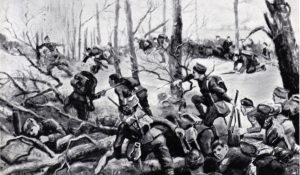 to the Western Front with the rank of lieutenant colonel. During his six months in Belgium, Churchill…who would later lead his country to victory in the World War II and be celebrated as the greatest political leader in British history, saw first-hand the hardships of war and the sacrifices that unknown, unheralded soldiers made for their country. More than once, he himself narrowly escaped death by an enemy shell. As he wrote to Clementine, “Twenty yards more to the left and no more tangles to unravel, no more anxieties to face, no more hatreds and injustices to encountera good ending to a chequered life, a final gift–unvalued–to an ungrateful country.” I find it amazing that a man so capable of “winning” a war, would count it as lost.
to the Western Front with the rank of lieutenant colonel. During his six months in Belgium, Churchill…who would later lead his country to victory in the World War II and be celebrated as the greatest political leader in British history, saw first-hand the hardships of war and the sacrifices that unknown, unheralded soldiers made for their country. More than once, he himself narrowly escaped death by an enemy shell. As he wrote to Clementine, “Twenty yards more to the left and no more tangles to unravel, no more anxieties to face, no more hatreds and injustices to encountera good ending to a chequered life, a final gift–unvalued–to an ungrateful country.” I find it amazing that a man so capable of “winning” a war, would count it as lost.
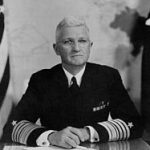
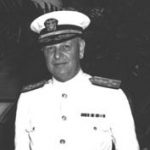 November 25, 1941, while not the date that would live in infamy, is a date that, in some ways, lives in infamy too. It was on this day that Admiral Harold R. Stark, United States Chief of Naval Operations, told Admiral Husband E. Kimmell, commander of the United States Pacific Fleet at Pearl Harbor, that both President Roosevelt and Secretary of State Cordell Hull thought that a Japanese surprise attack is a distinct possibility. It was their thought that the attack might possibly happen on the following Monday, because the Japanese were notorious for attacking without warning, President Franklin D. Roosevelt had informed his Cabinet. “We must all prepare for trouble, possibly soon,” he telegraphed British Prime Minister Winston Churchill.
November 25, 1941, while not the date that would live in infamy, is a date that, in some ways, lives in infamy too. It was on this day that Admiral Harold R. Stark, United States Chief of Naval Operations, told Admiral Husband E. Kimmell, commander of the United States Pacific Fleet at Pearl Harbor, that both President Roosevelt and Secretary of State Cordell Hull thought that a Japanese surprise attack is a distinct possibility. It was their thought that the attack might possibly happen on the following Monday, because the Japanese were notorious for attacking without warning, President Franklin D. Roosevelt had informed his Cabinet. “We must all prepare for trouble, possibly soon,” he telegraphed British Prime Minister Winston Churchill.
Kimmel’s command was at the mid-Pacific base at Oahu, which included, Pearl Harbor. At the time he received the “warning” from Stark, he was negotiating with Army Lieutenant General Walter C. Short, commander of all United States forces at Pearl Harbor, about sending United States warships out from Pearl Harbor in order to reinforce Wake and Midway Islands, along with the Philippines, which were considered possible Japanese targets. But the Army had no anti aircraft artillery to spare. War worries struck due to an intercepted Japanese diplomatic message, which gave November 25 as a deadline of sorts. If Japanese diplomacy had failed to convince the Americans to revoke the economic sanctions against Japan, “things will automatically begin to happen,” the message related. Those “things” were becoming obvious, in the form of Japanese troop movements off Formosa (Taiwan), toward Malaya. In reality, they were headed for Pearl Harbor, as was the Japanese First Air Fleet, but no one had guessed that was the intended target.
Despite the fact that so many in positions of command anticipated a Japanese attack, they had all failed to figure out that Hawaii was the target. When the attack came, they were all taken by complete and deadly surprise. Maybe they should have known, especially given the failure of diplomacy, when Japan refused United States demands to withdraw from both the Axis pact and occupied territories in China and Indochina, but no 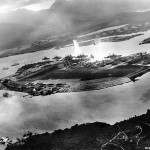
 one guessed Pearl Harbor was the target. Unfortunately they assumed Midway or Wake islands, because they seemed to be more strategic targets, and they expected that Japan would need those locations to have a chance at victory. I don’t know why the Japanese decided on Pearl Harbor, but perhaps it was a way of attacking in the heart of the United States…or as much as they felt they could. Whatever the case may be, the United States came back with a vengeance, and the Japanese would regret their attack on Pearl Harbor, because they would lose the war, date that would live in infamy…or not.
one guessed Pearl Harbor was the target. Unfortunately they assumed Midway or Wake islands, because they seemed to be more strategic targets, and they expected that Japan would need those locations to have a chance at victory. I don’t know why the Japanese decided on Pearl Harbor, but perhaps it was a way of attacking in the heart of the United States…or as much as they felt they could. Whatever the case may be, the United States came back with a vengeance, and the Japanese would regret their attack on Pearl Harbor, because they would lose the war, date that would live in infamy…or not.
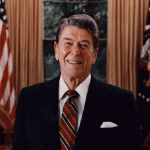 After the March 5, 1946, speech by former British Prime Minister Winston Spencer Churchill, condemning the Soviet Union’s policies in Europe, in which he declared, “From Stettin in the Baltic to Trieste in the Adriatic, an iron curtain has descended across the continent.” It was basically the opening remark that defined the Cold War years, and everyone knew that Russia could not be trusted. I suppose that they were similar to the North Koreans today. The Cold War would continue for the next 45 years. It was a source of concern for a number of United States Presidents over the years, as well as the American people. President Ronald Reagan was one of those presidents.
After the March 5, 1946, speech by former British Prime Minister Winston Spencer Churchill, condemning the Soviet Union’s policies in Europe, in which he declared, “From Stettin in the Baltic to Trieste in the Adriatic, an iron curtain has descended across the continent.” It was basically the opening remark that defined the Cold War years, and everyone knew that Russia could not be trusted. I suppose that they were similar to the North Koreans today. The Cold War would continue for the next 45 years. It was a source of concern for a number of United States Presidents over the years, as well as the American people. President Ronald Reagan was one of those presidents.
On March 8, 1983, while speaking at a convention of the National Association of Evangelicals in Florida, President Ronald Reagan publicly referred to the Soviet Union as an evil empire. It was the second time in his career that President Reagan had made this reference. He had first used the phrase in a 1982 speech at the British House of Commons. Some considered Reagan’s use of the Star Wars film-inspired terminology to be brilliant democratic rhetoric, but then in my opinion there was little about President Reagan that wasn’t brilliant. Of course, there were those within the international diplomatic community who denounced it as irresponsible bombast…typical remarks from those who would appease their enemies, thinking that it would stave off any attack. Most evil nations think of appeasement as a show of weakness…and it doesn’t do much for how the citizens of the good nations feel about their own safety either.
President Reagan was prepared to take an aggressive stance toward the Soviet Union. In his plan, known as the 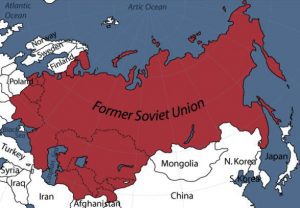 Reagan Doctrine, he warned the nations of the world against what he saw as the dangerous trend of tolerating the Soviets build-up of nuclear weapons and attempts to infiltrate Third World countries in order to spread communism. President Reagan’s policy was basically peace through strength. We had to make the Soviets understand that we would never compromise our principles and standards, nor ignore the facts of history and the aggressive impulses of an evil empire. To do so would mean abandoning the struggle between right and wrong and good and evil, and he knew that must never happen. I think we, the nations of the world, have seen just how detrimental a weak security stance can be given the current mess we are digging out of.
Reagan Doctrine, he warned the nations of the world against what he saw as the dangerous trend of tolerating the Soviets build-up of nuclear weapons and attempts to infiltrate Third World countries in order to spread communism. President Reagan’s policy was basically peace through strength. We had to make the Soviets understand that we would never compromise our principles and standards, nor ignore the facts of history and the aggressive impulses of an evil empire. To do so would mean abandoning the struggle between right and wrong and good and evil, and he knew that must never happen. I think we, the nations of the world, have seen just how detrimental a weak security stance can be given the current mess we are digging out of.
Reagan proposed a policy that went beyond the Truman Doctrine of containment, urging active intervention. His plan was to increase United States military spending and, if necessary, to use force to roll back communist expansion in Third World nations. His administration provided military aid to Nicaraguan groups fighting the leftist Sandinista government and gave material support to the Afghan mujahedeen in their ongoing war against Soviets. At the same time, he reassured Americans that he would pursue an understanding with totalitarian powers and cited the United States’ effort to limit missile development as a step toward peace. Reagan’s doctrine came at the same time as a surge in international and domestic protests against the United States-Soviet arms  race. His opponents blamed the administration for causing the largest increase in American military spending since the beginning of the Cold War, a policy that swelled the nation’s budget deficit. I suppose that those who just look at the money, might think this was a bad thing, but in the late 1980s the Soviet Union collapsed, ending decades of communist rule in Russia and Eastern Europe. There were those who believed that it had collapsed under the weight of its own bloated defense spending and a protracted war in Afghanistan, but Reagan and his supporters credited his hard-line anti-communist policies for defeating Soviet communism. I am inclined to agree with President Reagan, because I have never believed that we can appease our way to peace and safety in this world.
race. His opponents blamed the administration for causing the largest increase in American military spending since the beginning of the Cold War, a policy that swelled the nation’s budget deficit. I suppose that those who just look at the money, might think this was a bad thing, but in the late 1980s the Soviet Union collapsed, ending decades of communist rule in Russia and Eastern Europe. There were those who believed that it had collapsed under the weight of its own bloated defense spending and a protracted war in Afghanistan, but Reagan and his supporters credited his hard-line anti-communist policies for defeating Soviet communism. I am inclined to agree with President Reagan, because I have never believed that we can appease our way to peace and safety in this world.
 Anytime a battle is waged between good and evil, there is always innuendo. The evil side always tries to deface the good side by calling them warmongers and racists. It doesn’t matter if the evil side is an evil nation, or an evil group within our own country. Whenever the good side tries to take a stand, they are viewed as racist, haters and warmongers. Not much has changed over the years either. If you think all of these accusations are modern day phenomenon, you are wrong. It’s been going on for many years, and has endured to this day.
Anytime a battle is waged between good and evil, there is always innuendo. The evil side always tries to deface the good side by calling them warmongers and racists. It doesn’t matter if the evil side is an evil nation, or an evil group within our own country. Whenever the good side tries to take a stand, they are viewed as racist, haters and warmongers. Not much has changed over the years either. If you think all of these accusations are modern day phenomenon, you are wrong. It’s been going on for many years, and has endured to this day.
On this day, March 5, 1946, former British Prime Minister Winston Spencer Churchill gave a speech condemning the Soviet Union’s policies in Europe and declared, “From Stettin in the Baltic to Trieste in the Adriatic, an iron curtain has descended across the continent.” Many people thought that Churchill’s speech was one of the opening volleys announcing the beginning of the Cold War. After he was defeated for re-election as prime minister of Great Britain in 1945, Churchill was invited to Westminster College in Fulton, Missouri where he gave his speech. President Harry S 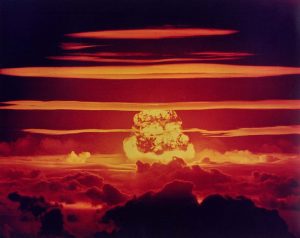 Truman joined him on the platform, listening intently to the speech. Churchill praised the United States as well, declaring it stood “at the pinnacle of world power.” Churchill saw the importance of a closer “special relationship” between the United States and Great Britain…the two great powers of the “English-speaking world” in organizing and policing the post World War II world.
Truman joined him on the platform, listening intently to the speech. Churchill praised the United States as well, declaring it stood “at the pinnacle of world power.” Churchill saw the importance of a closer “special relationship” between the United States and Great Britain…the two great powers of the “English-speaking world” in organizing and policing the post World War II world.
Churchill was worried about the expansionistic policies of the Soviet Union. In addition to the “iron curtain” that had descended across Eastern Europe, Churchill spoke of “communist fifth columns” that were operating throughout western and southern Europe. Churchill drew parallels with the disastrous appeasement of Hitler prior to World War II, and advised that in dealing with the Soviets there was “nothing which they admire so much as strength, and there is nothing for which they have less respect than for military weakness.”
Wisely, Truman and other United States officials received the speech in the spirit it was given. They knew that the Soviet Union was bent on expansion, and that they had to stand tough. Churchill’s “iron curtain” phrase 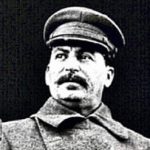 became a part of the official vocabulary of the Cold War era. Some of the United States officials were less than comfortable with the “special relationship” Churchill had spoken of. They knew that the English were valuable allies for the Cold War, they were also aware of Great Britain’s power, and worried about being used a pawns to help support the crumbling British empire. In the Soviet Union, Russian leader Joseph Stalin denounced the speech as “war mongering,” and referred to Churchill’s comments about the “English-speaking world” as imperialist “racism.” The rhetoric never seems to change, does it. The British, Americans, and Russians, all allies against Hitler less than a year before the speech, were drawing the battle lines of the Cold War…and it would be a long 45 year war, lasting from 1946 to 1991.
became a part of the official vocabulary of the Cold War era. Some of the United States officials were less than comfortable with the “special relationship” Churchill had spoken of. They knew that the English were valuable allies for the Cold War, they were also aware of Great Britain’s power, and worried about being used a pawns to help support the crumbling British empire. In the Soviet Union, Russian leader Joseph Stalin denounced the speech as “war mongering,” and referred to Churchill’s comments about the “English-speaking world” as imperialist “racism.” The rhetoric never seems to change, does it. The British, Americans, and Russians, all allies against Hitler less than a year before the speech, were drawing the battle lines of the Cold War…and it would be a long 45 year war, lasting from 1946 to 1991.
 It’s always fun to find out that you are related to someone who is famous, and for me, it has been common knowledge for all of my life. The Spencer side of my family is full of aristocracy. Some are princes and princesses, and even future kings, and others were great strategists, like Winston Leonard Spencer-Churchill, who is my 15th cousin once removed. You will notice the hyphen, and while it isn’t in his name, it is nevertheless, correct. He was a product of grandparents who merged two wealthy family names, when his 4th great grandfather, Charles Spencer married Ann Churchill and they hyphenated the names. Later, family members either used the traditional Spencer name, such as Diana Spencer’s line, or they used the Churchill name, as Winston Churchill’s line did, even though they continued the Spencer part of the name in his line. People have often thought it was his middle name, but that is not so. I don’t know if they used the hyphen back then, but the names were both last names.
It’s always fun to find out that you are related to someone who is famous, and for me, it has been common knowledge for all of my life. The Spencer side of my family is full of aristocracy. Some are princes and princesses, and even future kings, and others were great strategists, like Winston Leonard Spencer-Churchill, who is my 15th cousin once removed. You will notice the hyphen, and while it isn’t in his name, it is nevertheless, correct. He was a product of grandparents who merged two wealthy family names, when his 4th great grandfather, Charles Spencer married Ann Churchill and they hyphenated the names. Later, family members either used the traditional Spencer name, such as Diana Spencer’s line, or they used the Churchill name, as Winston Churchill’s line did, even though they continued the Spencer part of the name in his line. People have often thought it was his middle name, but that is not so. I don’t know if they used the hyphen back then, but the names were both last names.
Churchill was born to Lord Randolph Spencer and his wife Jennie Jerome, on November 30, 1874. They were members of a prestigious family with a long history of military service and upon his father’s death in 1895, 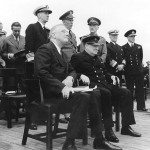 Winston joined the British Fourth Hussars. During the next five years, Winston Churchill enjoyed an illustrious military career, serving in India, the Sudan, and South Africa, and distinguishing himself several times in battle. In 1899, he resigned his commission to concentrate on his literary and political career and in 1900 was elected to Parliament as a Conservative MP from Oldham. In 1904, he began serving in a number of important posts before being appointed Britain’s First Lord of the Admiralty in 1911. Churchill foresaw a war that would bring with it a need for a navy that was ready, and well thought out strategies that would bring victory, and he worked to bring such a British Navy into existence. Churchill was a born strategist.
Winston joined the British Fourth Hussars. During the next five years, Winston Churchill enjoyed an illustrious military career, serving in India, the Sudan, and South Africa, and distinguishing himself several times in battle. In 1899, he resigned his commission to concentrate on his literary and political career and in 1900 was elected to Parliament as a Conservative MP from Oldham. In 1904, he began serving in a number of important posts before being appointed Britain’s First Lord of the Admiralty in 1911. Churchill foresaw a war that would bring with it a need for a navy that was ready, and well thought out strategies that would bring victory, and he worked to bring such a British Navy into existence. Churchill was a born strategist.
Winston Churchill’s military leadership took quite a blow during World War I, when he was held responsible for the disastrous Dardanelles and Gallipoli campaigns in 1915, and he was excluded from the war coalition government. He resigned his commission, and volunteered to command an infantry battalion in France. In 1917, Churchill returned to politics. He became a cabinet member of the Liberal government of Lloyd George, a move that I suspect he would regret. From 1919 to 1921, he was secretary of state for war. Then, in 1924 he returned to the Conservative Party, where two years later he played a leading role in the defeat of the General Strike of 1926. Out of office from 1929 to 1939, Churchill issued unheeded warnings of the threat of German 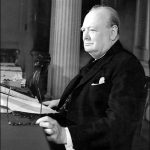 and Japanese attacks. After the outbreak of World War II in Europe, Churchill was called back to his post as First Lord of the Admiralty and eight months later replaced Neville Chamberlain, an ineffective military leader, as prime minister of a new coalition government. In the first year of his administration, Britain stood alone against Nazi Germany, but Churchill promised his country and the world that the British people would “never surrender.” He rallied the British people to a strong resistance and expertly orchestrated Franklin D Roosevelt and Joseph Stalin into an alliance that eventually crushed the Axis. Churchill proved himself to be the best military leader Britain could possibly have had at a time when he was desperately needed. Today would have been Winston Spencer Churchill’s 142nd birthday.
and Japanese attacks. After the outbreak of World War II in Europe, Churchill was called back to his post as First Lord of the Admiralty and eight months later replaced Neville Chamberlain, an ineffective military leader, as prime minister of a new coalition government. In the first year of his administration, Britain stood alone against Nazi Germany, but Churchill promised his country and the world that the British people would “never surrender.” He rallied the British people to a strong resistance and expertly orchestrated Franklin D Roosevelt and Joseph Stalin into an alliance that eventually crushed the Axis. Churchill proved himself to be the best military leader Britain could possibly have had at a time when he was desperately needed. Today would have been Winston Spencer Churchill’s 142nd birthday.

